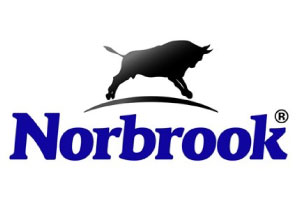

Product Ref: NBNOR54 Category: N


Royal Mail 2nd Class / Parcel Force 48
UK to UK :Normally arrives in 2-4 business days.
UK to Ireland :Normally arrives in 4-6 business days
UK to EU Countries : Normally arrives in 6-10 working days depending on where the parcel is going
Please note standered delivery is none trackable , none insured , no responsabily for lose or Damage
----------------------------------------------------------------------------------------------------------------

Royal Mail First Class / Parcel Force 24
UK to UK :Normally arrives in 1-2 business days.
UK to Ireland 3-4 business days
UK to EU Countries : Normally arrives in 6-10 working days depending on where the parcel is going
Please note :Trackable , Royal Mail insured up to £50.
--------------------------------------------------------------------------------------------------------
Parcel Force Express AM Guaranteed before Midday.
UK to UK only . UP to 5KG Max Weight
Arrives next day before 12 noon, requires a signature.
Parcel Forcel Terms & Conditions apply
Important: Parcel Force advise that there are some postcodes where an extended delivery time exists, and may affect the date of delivery or the service is not available.
| Category | POM-VPS |
| Temperature | Ambient |
| MA/VM/EU No: | 02000/4208 |
| Species |
|
| VMD Link | https://www.vmd.defra.gov.uk/ProductInformationDatabase/product/A005190 |
| NOAH Link | https://www.noahcompendium.co.uk/?id=-471116 |
| Dosage | Amounts to be Administered and Administration Route The veterinary medicinal product is administered orally at a single dose rate of 200 μg/kg of bodyweight. One syringe division of paste should be administered per 100 kg bodyweight [based on the recommended dosage of 200 μg/kg (0.2 mg/kg)]. Each syringe delivers 140 mg ivermectin, sufficient to treat 700 kg of bodyweight. Horses weight should be accurately determined for the correct use of the paste. The animal’s mouth should be free from food to ensure swallowing. The tip of the syringe barrel should be inserted at the interdental space (the gap between the front and back teeth). Immediately elevate the horse’s head for a few seconds to ensure swallowing. Do not use the same syringe to treat more than one animal unless horses are running together or in direct contact with each other on the same premises. For best results all horses in a yard or grazing together should be included in a regular parasite control programme, with particular attention being paid to mares, foals and yearlings, and treated at the same time. Foals should be treated initially at 6-8 weeks of age and routine treatment repeated as appropriate. Retreatment should be done according to the epidemiological situation, but not less than 30 days interval. Overdose (symptoms, emergency procedures, antidotes), if necessary Mild transitory signs (slowed pupillary light response and depression) have been seen at a higher dose of 1.8 mg/kg (9 times the recommended dose level). Other signs seen at higher doses include mydriasis, ataxia, tremors, stupor, coma and death. The less severe signs have been transitory. Although no antidote has been identified, symptomatic therapy may be beneficial. |
| Withdrawals | Withdrawal Period(s) Edible tissues: 34 days Not permitted in mares producing milk for human consumption |